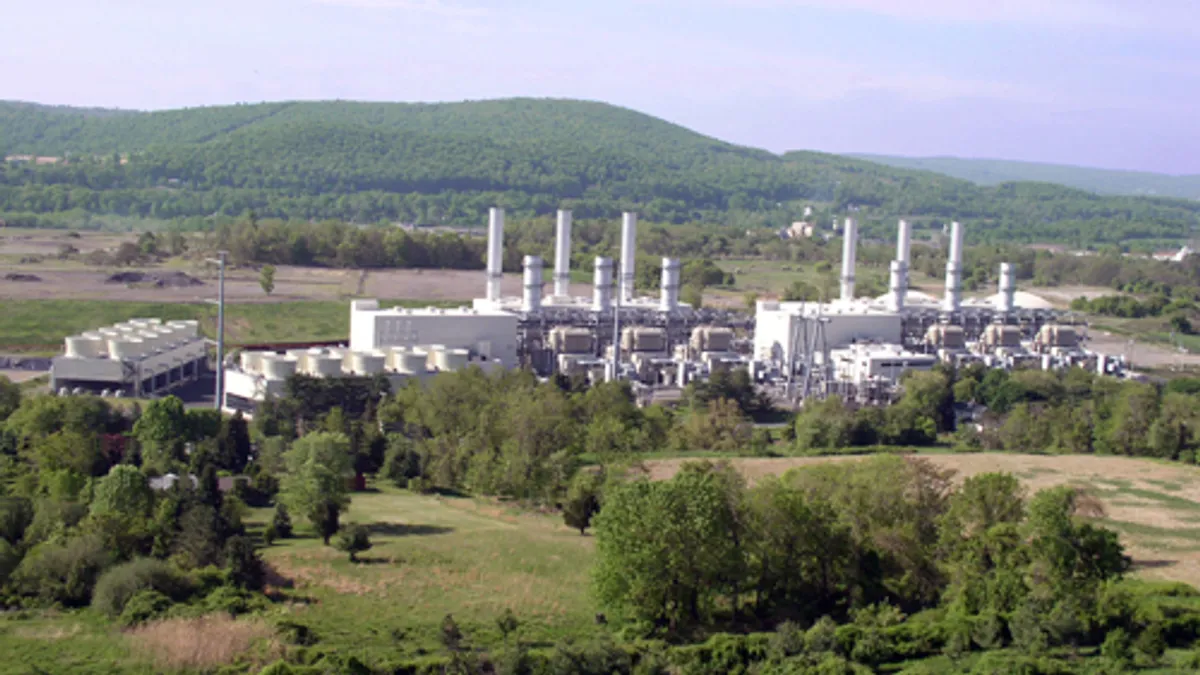Dive Brief:
-
The U.S. Energy Information Administration on Tuesday released its annual long-term energy outlook, which projects the U.S. becoming a net energy exporter by 2022 for the first time since 1953.
-
EIA sees U.S. production of natural gas increasing through 2050 while production of crude oil and petroleum products begins to decline toward the end of that period.
-
The EIA also projects that natural gas prices will remain below $5 per million British thermal units and will continue to fuel a switch to gas-fired generation which, together with renewables, account for almost all new generation capacity.
Dive Insight:
While natural gas grows the most on an absolute basis in EIA’s projections, nonhydroelectric renewable energy grows the most on a percentage basis.
EIA’s projections have natural gas’s share of generation steadily increasing market share relative to coal through 2050.
Renewable generation, on the other hand, more than doubles between 2017 and 2050, with an average annual growth rate of 2.8%. EIA projections see 80 GW of new wind and solar photovoltaic capacity being added between 2018 and 2021, spurred by declining capital costs and the availability of tax credits.
The addition of new wind farms is expected to continue, but at a slower pace after the expiration of production tax credits in the early 2020s. Although the investment tax credit for residential solar power expires and for commercial solar is reduced in that same time frame, EIA projects solar power growth will continue through 2050 for both the utility scale and small scale applications.
Between 2020 and 2050, the EIA estimates utility-scale wind capacity will grow by 20 GW, and utility-scale solar PV capacity will grow by 127 GW. Over this same period, the EIA projects utility-scale storage capacity will grow by 34 GW, driven by continued cost declines, policies such as storage mandates in California and market participation rules in the PJM Interconnection, and a need to integrate intermittent resources into the grid.
Coal-fired generation, however, does not fare as well in EIA’s outlook. The agency projects coal capacity decreasing by another 65 GW between 2017 and 2030 in the face of continued competition from low gas prices and the increasing penetration of renewables. EIA sees coal generation leveling off at about 190 GW through 2050. Tied to the decline in coal generation, the EIA projects coal production declining from 784 million short tons in 2017 to 699 million short tons in 2022.
Nuclear generation also declines in EIA’s projection, dropping to 79 GW in 2050 from 99 GW in 2017.
As a result of the combination of coal plant retirements, increased gas generation and low electricity demand, EIA sees a reduction in carbon dioxide emissions from electric generators. The Annual Energy Outlook projects 1.72 billion metric tons of CO2 emissions in 2020, which is 120 million metric tons, or 7%, lower than the projected level of CO2 emissions in last year’s outlook.
After 2030, however, when most planned coal retirements would already be done, EIA sees annual CO2 emissions stabilizing at about 1.71 billion metric tons, which is 143 million metric tons, or 8%, below the projections in last year’s Annual Energy Outlook.
The EIA’s Annual Energy Outlook is widely used in the energy industry as the basis for a variety of analyses and by policymakers and business leaders trying to gauge the direction energy trends will take. The EIA has been criticized for missing large trends, such as the rapid growth of wind and solar power installations. But it is worth remembering what the EIA often repeats: the annual outlook is a projection, not a forecast.
The outlook assumes slow change from the status quo, Eric Hittinger, an assistant professor in the Department of Public Policy at the Rochester Institute of Technology, told Utility Dive. EIA’s approach to forecasting is “neutral” with regard to which possible future will occur, but that also makes it useful. “It shows what will happen if we keep following the same path, which is a useful reference case,” Hittinger said.













